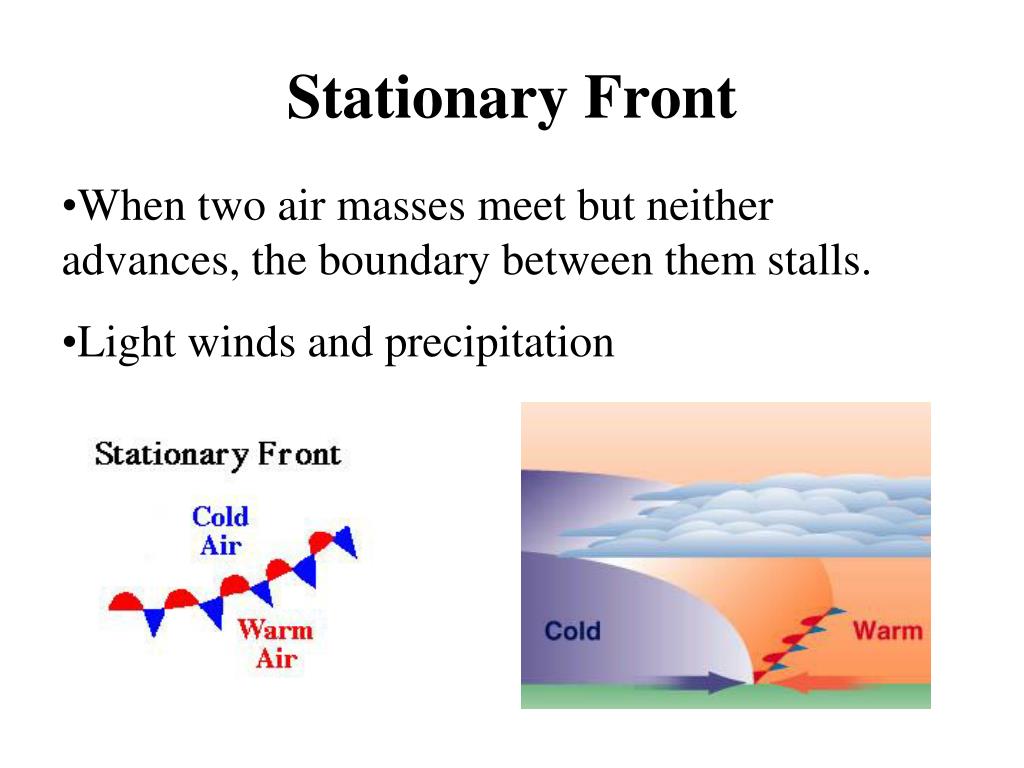
Warmer air ahead of the cold front (such as at B) moves up and over the colder air, creating cumuliform cloud cover. As the front and associated mass of cold, dense air move east, it displaces and mechanically forces up the less dense warmer air that is east of the front.ĥ. Let’s examine the weather in the eastern half of the U.S., beginning with the long cold front. Warm fronts are usually associated with mT or cT air masses.Ĥ. The warm front over northwestern North America is moving east. The red semicircles along a warm front indicate the direction in which the warm air mass is pushing. The red lines represent warm fronts, the leading edges of warm air masses. indicate that the cold front is pushing eastward. Cold fronts are usually associated with cP but can also occur along the leading edge of an A or mP air mass.ģ. The east-facing triangles on the long cold front in the center of the U.S.

Blue triangles along a cold front indicate the direction that the cold air mass is pushing. The blue lines represent cold fronts, the leading edges of cold air masses. Examine each of the features on this map and note any correspondence between the fronts, high and low pressure, and cloud cover.Ģ. The thin gray lines are isobars (lines of equal pressure), and the background of the map is a satellite image showing cloud cover. The map below shows several weather fronts as decorated lines, among the areas of high pressure (H) and low pressure (L). What Processes Occur Along Cold and Warm Fronts?ġ. There are several types of fronts, depending on the manner in which one air mass is displacing the other and whether the front is moving. If the rising air cools to its dew-point temperature, cloud formation will begin, perhaps followed by precipitation.

Whenever different air masses meet along a front, the less dense, warmer one will be pushed up over the more dense, colder one. THE NARROW ZONE separating two different air masses is called a front and is often the site of rising atmospheric motion.


 0 kommentar(er)
0 kommentar(er)
